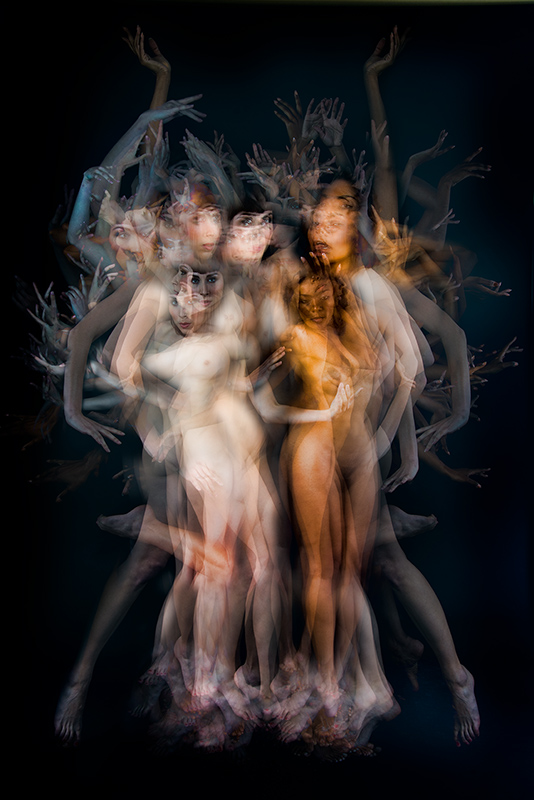To make this image, I started by photographing the beautiful models Kira and Merrique together on a black seamless background with studio strobe lighting. The lighting was set up with a big, soft light on the left, and a smaller, less powerful light through an umbrella on the right.

I made ten in-camera multiple exposures. Each multiple exposure consisted of either five or eight individual exposures. I had auto-gain turned on in my camera, so each multiple exposure was automatically adjusted to compensate for the number of exposures in the sequence. I counted out each individual exposure, and the models paused on each shot.
In Photoshop, I stacked the ten multiple exposures (as if they were star trails!). I tweaked the result a little to get rid of anomalies, like fingernails appearing in mid-air, but mostly this image comes from an “out of the box” in-camera multiple exposures followed by stacking in Photoshop to create a composite.
That makes Being and Becoming a combination of old and new techniques, one of my favorite themes in photography. In-camera multiple exposures are about as old as photography, but the ability to create stacked composites over time is an artifact of the Photoshop era.
Pingback: Models
Pingback: Duos and Redos
Pingback: Kali and Les Demoiselles
Pingback: Multiple Exposures